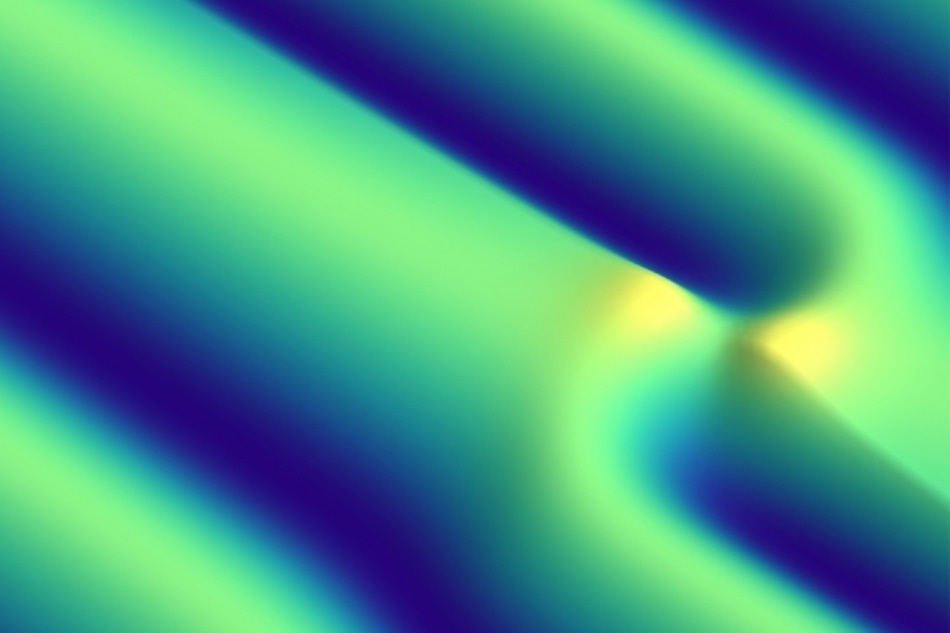Oct 16 2018
In-depth studies have been done to analyze the way ordinary materials undergo a phase change, such as freezing or melting.
Now, a group of scientists have observed when a phase change is triggered with the help of intense pulses of laser light, rather than varying the temperature, the process takes place in a very different way.
 (Image credit: Courtesy of the researchers)
(Image credit: Courtesy of the researchers)
For a long time, it was suspected by researchers that this might be the case. However, the process has not been noticed and confirmed to date.
Using these new insights, scientists could be in a position to harness the mechanism for use in innovative types of optoelectronic devices.
The strange discovery has been reported in the Nature Physics journal on October 15, 2018.
The group was headed by Nuh Gedik, a professor of physics at MIT, with graduate student Alfred Zong, postdoc Anshul Kogar, and 16 others at MIT, Stanford University, and Skolkovo Institute of Science and Technology (Skoltech) in Russia.
Rather than using an actual crystal such as ice, the researchers used an electronic analog known as a charge density wave - a frozen electron density modulation within a solid - that closely resembles a crystalline solid with respect to characteristics.
The typical melting behavior of a material such as ice advances in a relatively uniform manner through the material.
However, when ultrafast laser pulses are used to induce the melting in the charge density wave, the phase change advances by producing various singularities in the material.
This is called topological defects, and these variations eventually impact the ensuing dynamics of electrons and lattice atoms in the material.
Gedik explained that these topological defects are similar to tiny vortices, or eddies, that occur in liquids like water.
The most important factor to observe this distinct melting process was the use of a set of exceptionally high-speed and accurate measurement methods to observe the process in action.
The fast laser pulse, with a length of less than a picosecond long (one-trillionth of a second), emulates the type of rapid phase changes that take place.
One example of a fast phase transition is quenching. For example, suddenly plunging a piece of semi-molten red-hot iron into water to cool it off nearly at the same instance.
This process is different from the way materials vary through gradual heating or cooling, where they have sufficient time to reach equilibrium at every stage of the temperature change.
Although such optically induced phase changes have been noticed even earlier, the exact mechanism through which they advance was obscure, stated Gedik.
The researchers used a combination of three methods for simultaneous observation of the response to the laser pulse.
For the research, they used a compound of lanthanum and tellurium, LaTe3, which is regarded to host charge density waves.
Collectively, these instruments render it feasible to track the motions of electrons and atoms inside the material as they change and respond to the pulse.
Gedik stated that in the experiments, “we can watch, and make a movie of, the electrons and the atoms as the charge density wave is melting,” and then continue the observation as the orderly structure then resolidifies. The team could evidently notice and confirm the existence of these vortex-like topological defects.
They also discovered that the time for resolidifying, which also involves the dissolution of these defects, is not uniform, but occurs on multiple timescales.
The intensity, or amplitude, of the charge density wave recovers quite rapidly when compared to the orderliness of the lattice.
This observation was only feasible with the series of time-resolved methods used in the research, with each offering a distinctive perspective.
Zong stated that the subsequent step in the study would be to make efforts to ascertain how they can “engineer these defects in a controlled way.”
Prospectively, that could be employed as a data storage system, “using these light pulses to write defects into the system, and then another pulse to erase them.”
Peter Baum, a professor of physics at the University of Konstanz in Germany, who was not part of this study, stated that “This is great work. One awesome aspect is that three almost entirely different, complicated methodologies have been combined to solve a critical question in ultrafast physics, by looking from multiple perspectives.”
Baum added that “the results are important for condensed-matter physics and their quest for novel materials, even if they are laser-excited and exist only for a fraction of a second.”
The study was performed in collaboration between scientists at MIT, Stanford University, and Skoltech. The U.S. Department of Energy, the Gordon and Betty Moore Foundation, the Army Research Office, and the Skoltech NGP Program supported this study.